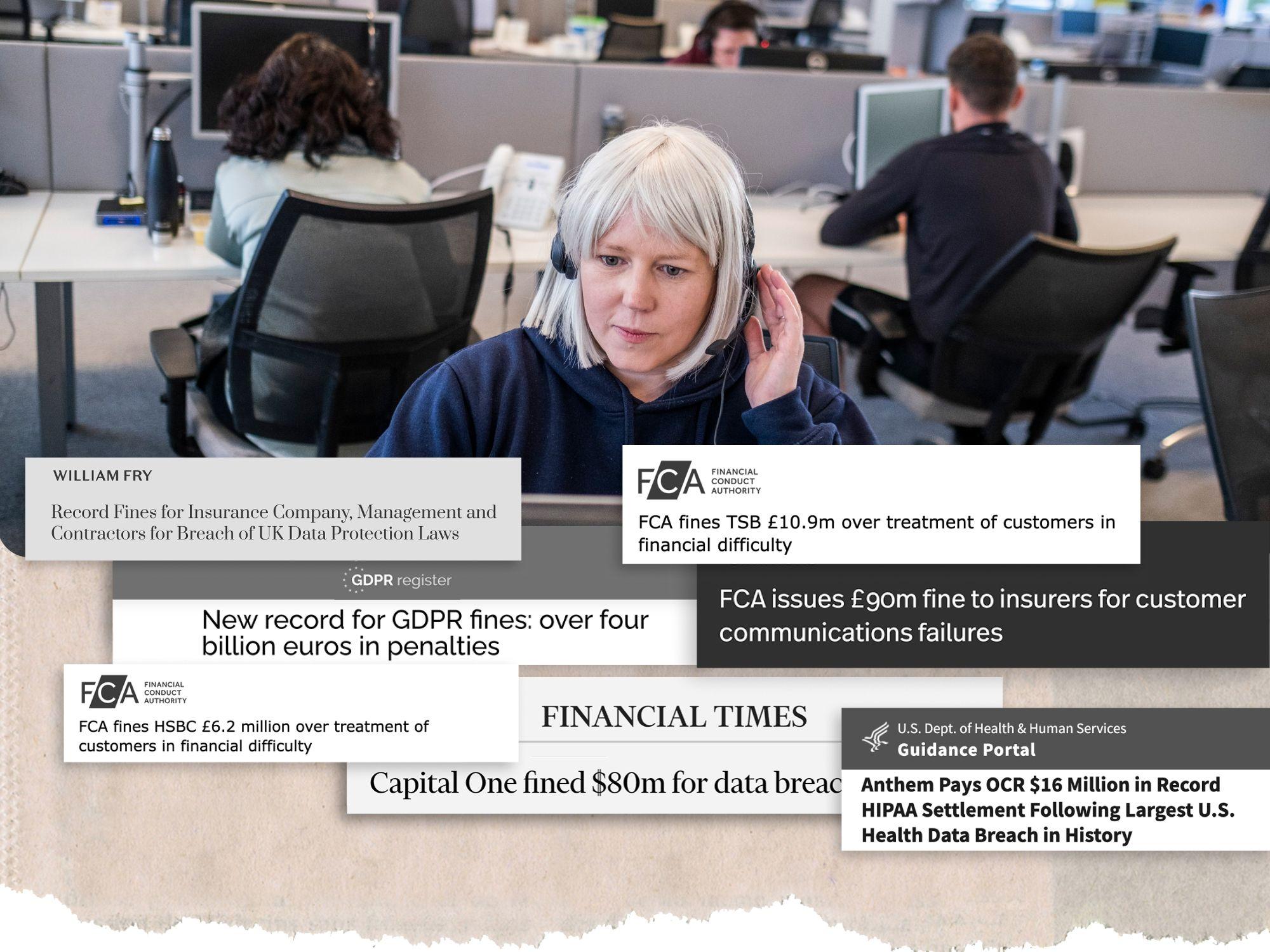
How important is accuracy in call transcription?
We delve into the importance of accuracy when it comes to call transcriptions, and how critical they are to regulations such as the FCA Consumer Duty Act.
In today's digital era, businesses are always on the look out for innovative technologies to gain a competitive edge, especially in the realm of call centres. While transcription software has emerged as a powerful tool in this sector, ensuring accuracy is fast becoming the linchpin for getting ahead. We delve deeper into understanding the necessity of transcription accuracy and which new tools companies should be exploring in order to achieve it.
The new significance of transcription accuracy
As leaders of call centres will know, precise transcription is not merely a convenience, but a necessity. The verbatim conversion of spoken words into text serves numerous (and essential) functions:
1) Legal compliance
Firms must adhere to legal frameworks such as the Financial Conduct Authority (FCA) and General Data Protection Regulation (GDPR), which underscore the importance of accurate record-keeping of conversations. The FCA’s New Consumer Duty sets out stringent guidelines under the “Consumer Principle” which states that “firms must take all reasonable steps to avoid causing foreseeable harm, enable customers to pursue their financial objectives, and to act in good faith”. A key element of the FDA’s consumer-firm relationship is “communication”: in order to protect themselves from possible investigations, companies must ensure thorough and accurate records of all agent-customer conversations.
2) Gathering training cues
An accurate transcript offers a solid springboard for analytics, which can be instrumental in agent training and improvement. It is only through meticulous and accurate transcripts that firms can unlock the true potential of conversational data, paving the way for better, targeted training.
3) Trend forecasting
Clear, decipherable data serves as a fertile ground from which a robust analysis can be conducted, offering valuable insights into customer behaviour, preferences, and emerging market trends with more nuance than was ever possible previously.
4) Identifying areas of opportunity
Precise transcripts are a source of authentic information, which when integrated with advanced speech analytics, can lead to substantial improvements in service delivery and customer satisfaction. Managers and analysts can delve deep into these transcripts to identify patterns, isolate areas that require improvement, and derive actionable insights that can steer the strategic direction of the company.
By fostering an environment where accurate data-driven insights are at the forefront, companies can ensure a continual cycle of improvement and innovation, propelling them towards achieving operational excellence and superior customer service. The refined data gleaned from accurate transcripts thus serves as a powerful tool, empowering firms to innovate and adapt in a constantly evolving market landscape.
5) Recording significant transactions
For sectors like insurance and finance, where discussions often involve critical data and agreements, transcription accuracy is non-negotiable. Transactions in these industries often involve discussions about substantial monetary values and sensitive personal information, necessitating a robust and accurate record of interactions to prevent costly errors or disputes.
In the event of audits or legal scrutinies, having precise transcripts can serve as a foundation to validate the authenticity of transactions and agreements entered into. Investing in sophisticated bidirectional voice isolation technologies, which pioneers in background noise removal, is a safety net for all stakeholders.
The challenge: achieving 100% accuracy
While implementing transcription software has become commonplace, achieving 100% accuracy is still a complex feat. Factors like accents, dialect variations, and notably, call centre background noise, pose significant challenges:
- Varied accents and dialects can sometimes confuse the clarity and precision of transcriptions. Different regions, even within the same country, can have vastly different ways of pronouncing words, making the transcription process a meticulous task requiring nuanced understanding and adaptation from the software.
- The buzz and chatter that naturally occurs in call centres impedes a software's ability to clearly isolate and transcribe voices. This interference can sometimes lead to misinterpretations or gaps in the transcription, potentially resulting in loss of critical information.
The Solution: overcoming barriers by removing background noise
Accuracy issues can be mitigated, but only if leaders invest in the right technologies that focus on background noise removal. This is where products like IRIS Clarity come into play, offering solutions that refine transcription accuracy markedly.
This type of noise cancellation software isolates the speaker's voice from any surrounding noises, ensuring a clean, undistorted feed for the transcription service. Bidirectional noise removal segregates not only the caller’s voice but also the agent’s responses, creating an environment where both parties can converse without any disturbances.
By enhancing the clarity of the conversation, IRIS Clarity (try it for free today) paves the way for more precise analytics, fostering an environment where constant improvement and compliance is sustainable. Tools like IRIS can be integrated with various headsets that call centre agents use, offering a seamless way to implement noise elimination at the source.
In a world where data is king, accuracy in transcription becomes a key player. Investing in cutting-edge technologies ensures not only compliance with legal requirements but also paves the way for more precise analytics and improved customer satisfaction. As we venture further into this digital age, aligning with technologies that prioritise transcription accuracy will undoubtedly be a decisive factor in the success of call centres globally. Therefore, embracing solutions that provide background noise cancellation should be the focal point for businesses aiming to excel in this sector.


